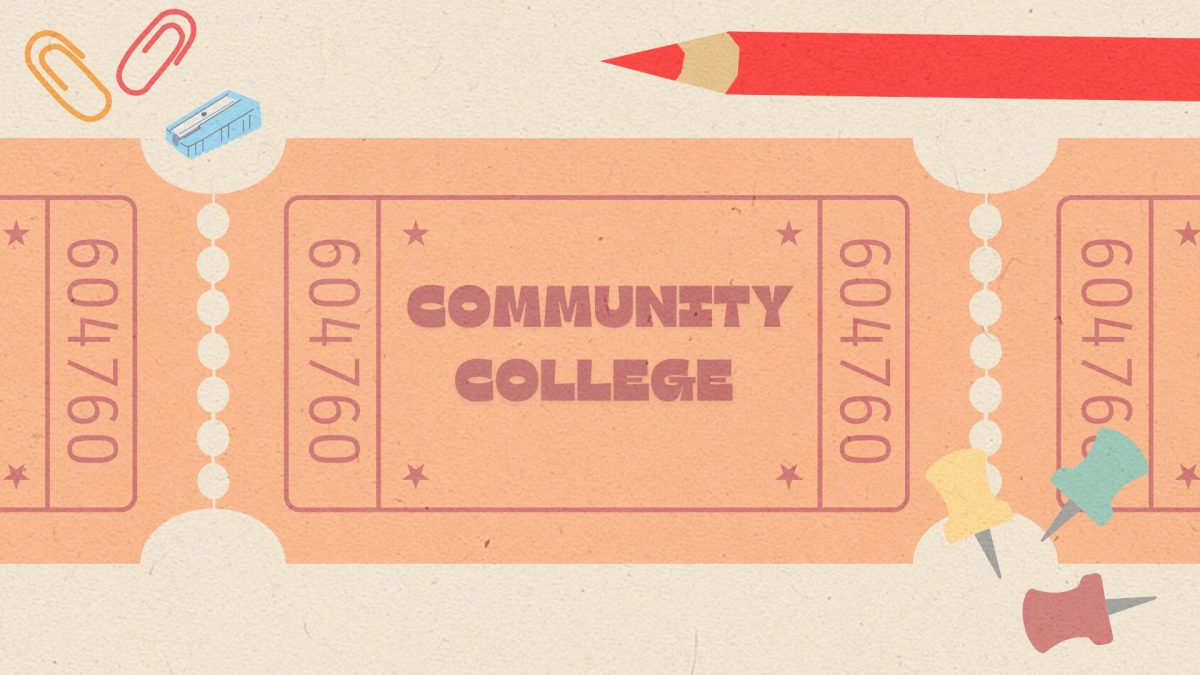For most high school students, attending a university seems to be a direct path to venture forth in their educational journey: graduate with a diploma, secure a spot at a four-year institution, receive a bachelor’s degree, and land a job in a desired career. The traditional plan seems simple enough, but with an increasingly competitive pool of applicants and skyrocketing tuition costs, it might be time to take a step back and consider options less advertised.
Attending community college first and transferring to a university has a certain stigma surrounding it, the less traditional route that many people consider an unimpressive scapegoat. In reality, its benefits are long-lasting – propelling students into their career paths and setting them up for success at universities in a multitude of ways.
For one, many graduates of community college first receive an associate degree for their completed coursework before working toward their bachelor’s at a university.
Marisa Flores, the Transfer Center’s student program advisor, praised City College’s wide variety of majors, such as criminal justice, journalism, and graphic design—areas of study that are more career-focused and not offered at the university level.
“Your career is not based on your major, and that’s the way that universities see it,” Flores said, explaining the logic behind the limited majors at UC campuses in particular. “Your career is going to be based on your experience and your involvement. With that being said, earning certain, specific skills is going to stand out in a resume.”
Obtaining a more skill-based certificate or degree prior to graduating from university with a bachelor’s degree can broaden a student’s internship and job opportunities.
In addition, along with the higher acceptance rate for transfer students, as compared to the more selective rate for freshmen, the transfer process overall is more transparent in terms of what universities are looking for on an application.
For freshman applicants, a comprehensive review of their application combines their extracurriculars, GPA, individual grades, and essays. Transfers, on the other hand, are usually not subject to a comprehensive review and, therefore, are known to focus more on increasing their GPA than perfecting their essays.
California State Universities (CSU) also reveal which of their campuses and majors are impacted or not impacted, with impacted campuses being more competitive.
City College students can also reap the benefits of transfer guarantee programs. These include the Transfer Admission Guarantee (TAG), which allows students to ensure admission to a participating UC campus of their choice as long as they maintain the required GPA outlined in the contract, and the associates degree for transfer (ADT) which guarantees admission to a CSU campus with a similar major.
With the admission requirements explicitly shared with each interested student, transfers know exactly what rules to follow to maintain guaranteed admission. Even if they do not partake in these programs, students still have a better understanding and indication of their odds of admission than freshmen do.
“It makes it easier for students to know where they’re going to get admitted so that they don’t have to spend a lot of money on applying so broadly,” Flores said.
Apart from transfer resources, the financial benefits of attending community college are just as significant, the most obvious being cheaper tuition.
In addition, most university students pay for a semester’s tuition regardless of their schedule, meaning that working students who do not have as much time to take a full load of classes still pay the same amount as their peers. At City College, students pay by the unit. This allows them to balance work and education, and they do not have to waste money and feel guilty about not filling up their schedule.
Some City College students may also be eligible for the California College Promise Grant (CCPG). Any student who graduated from a local high school is entitled to two years of free tuition and textbooks. These local students may also save on housing by living at home.
Another benefit of community college is smaller classes, which allow for more personal and direct instruction instead of large lecture halls. Students can still learn to manage more rigorous work than they did in high school, but this serves as a transition to more independent instruction, as seen in universities.
“A freshman, they could be in a class of 800 to 1,000 students,” Flores said. “So, you’re not getting any attention. It’s just ‘do it on your own.’”
Even once students transfer as juniors, their classes at university will be smaller than freshman lectures anyway since they have already finished their general education requirements (GEs) at community college and will, therefore, be enrolled in more specific courses with fewer students.
With many transfer resources, financial aid, and focused instruction, community college is a valuable resource that high school graduates should utilize in their educational journey, regardless of their future aspirations.








